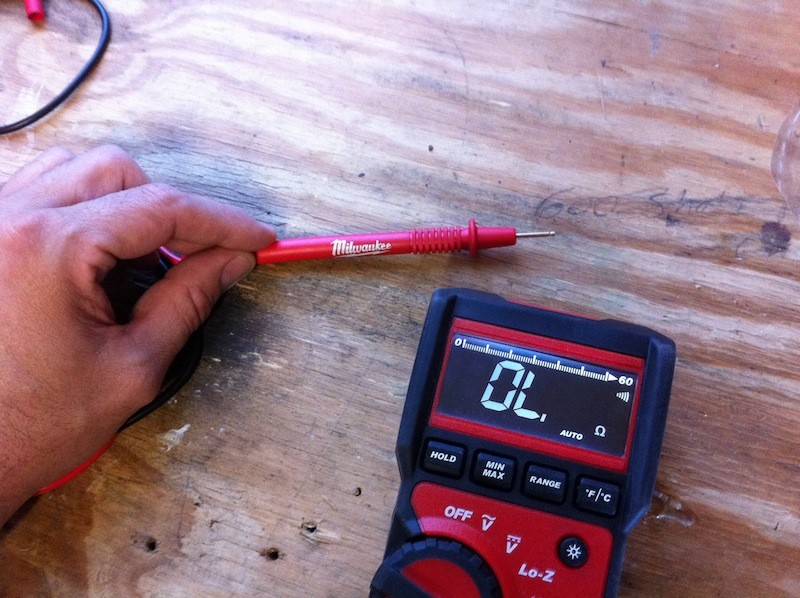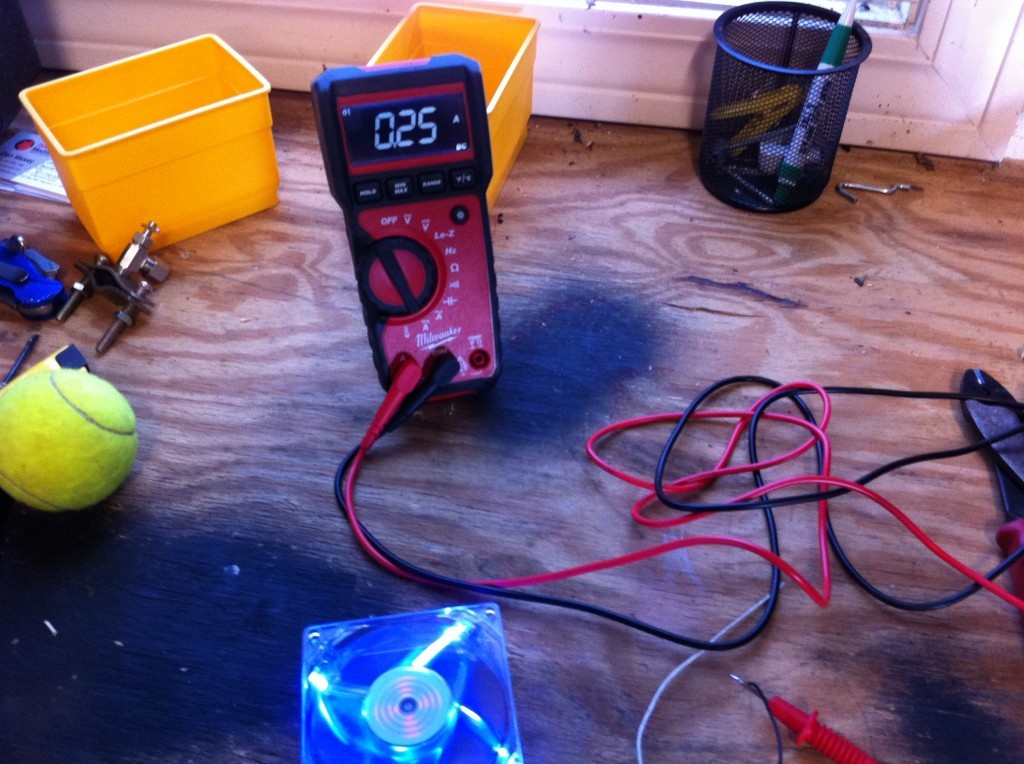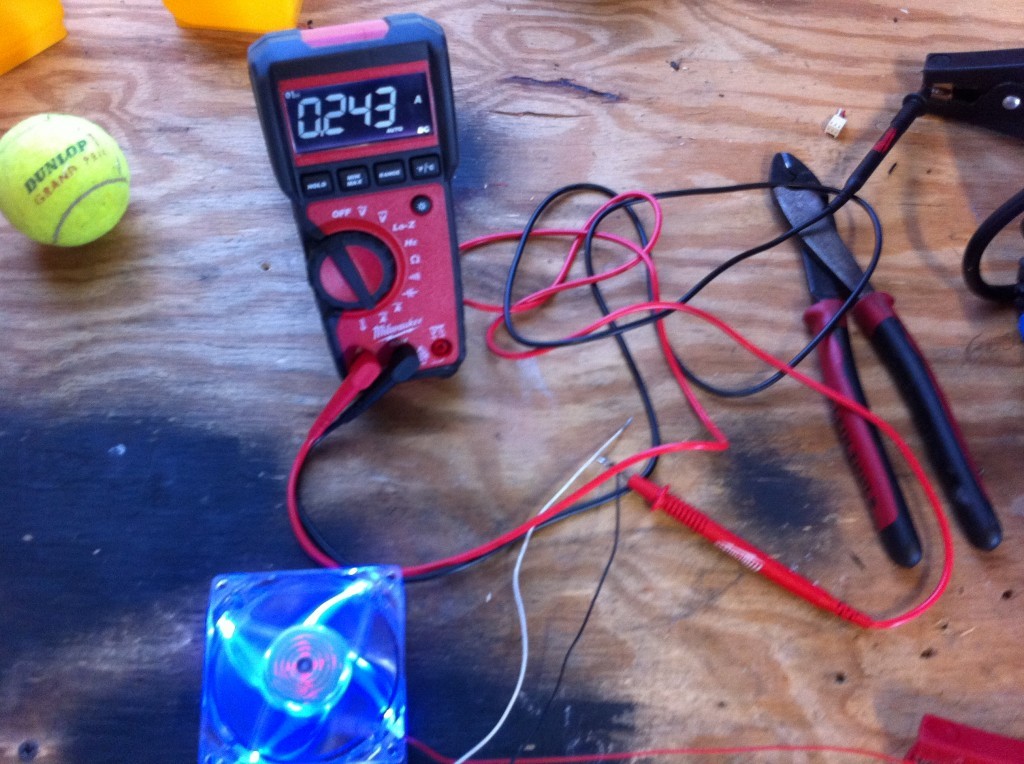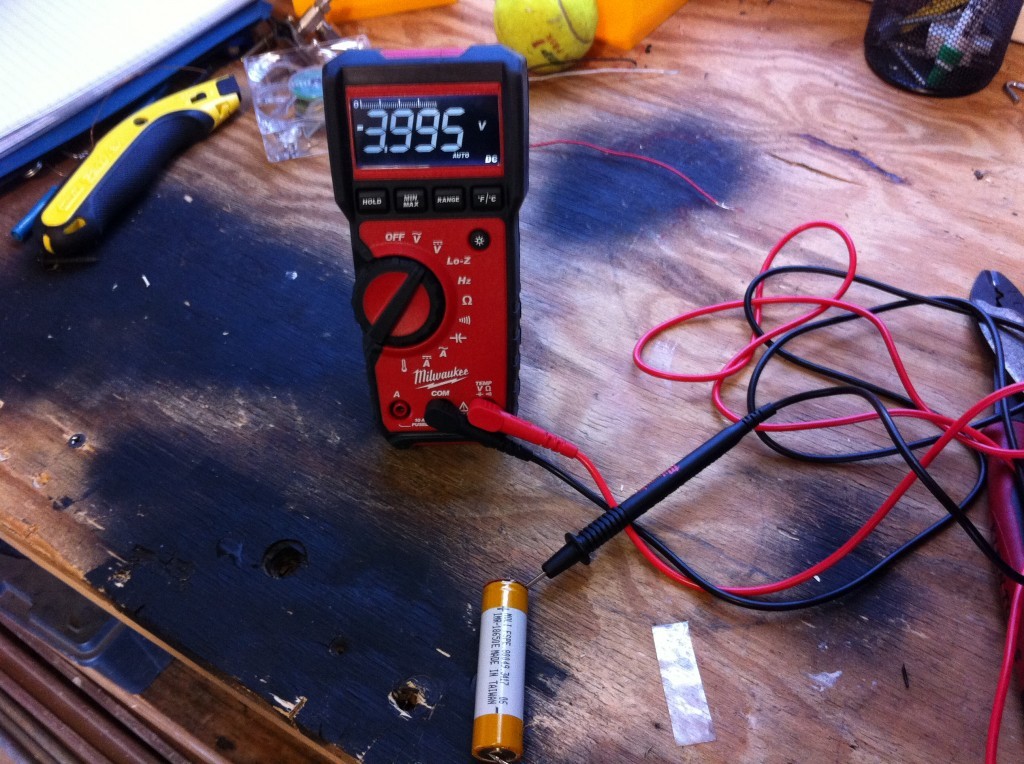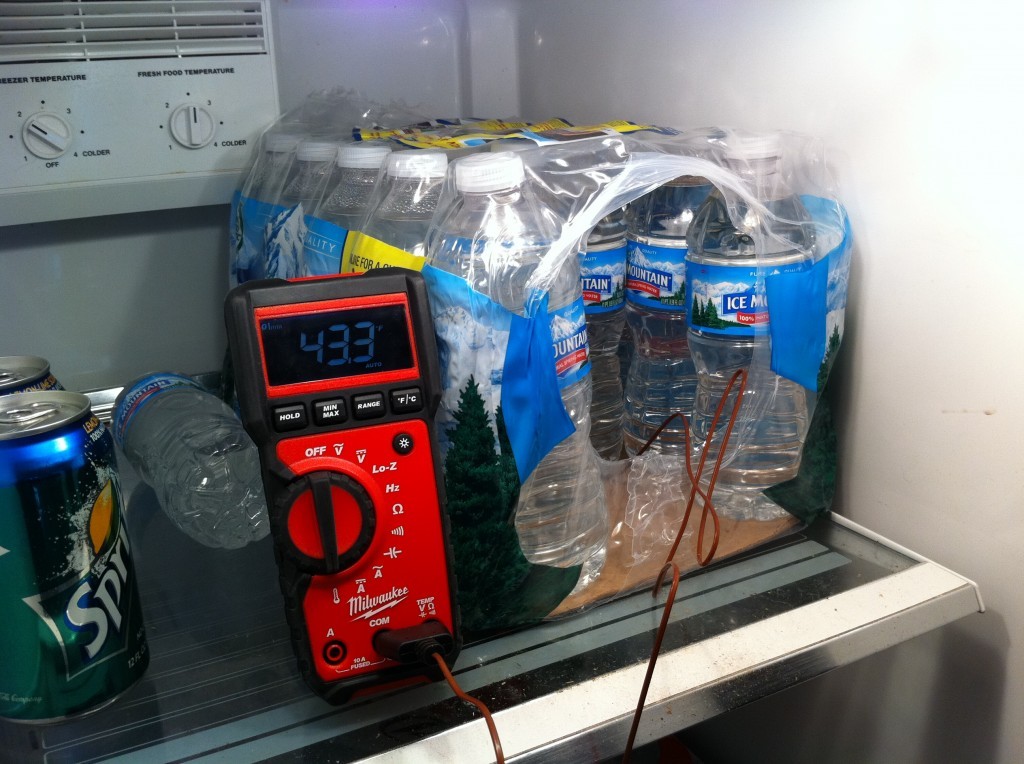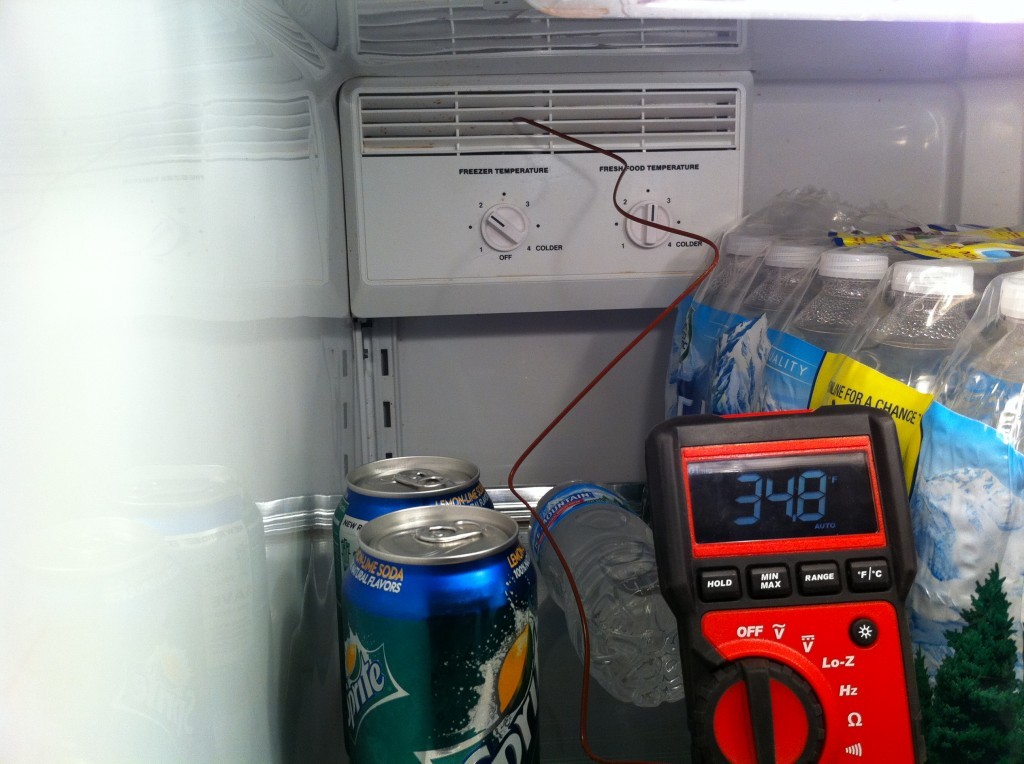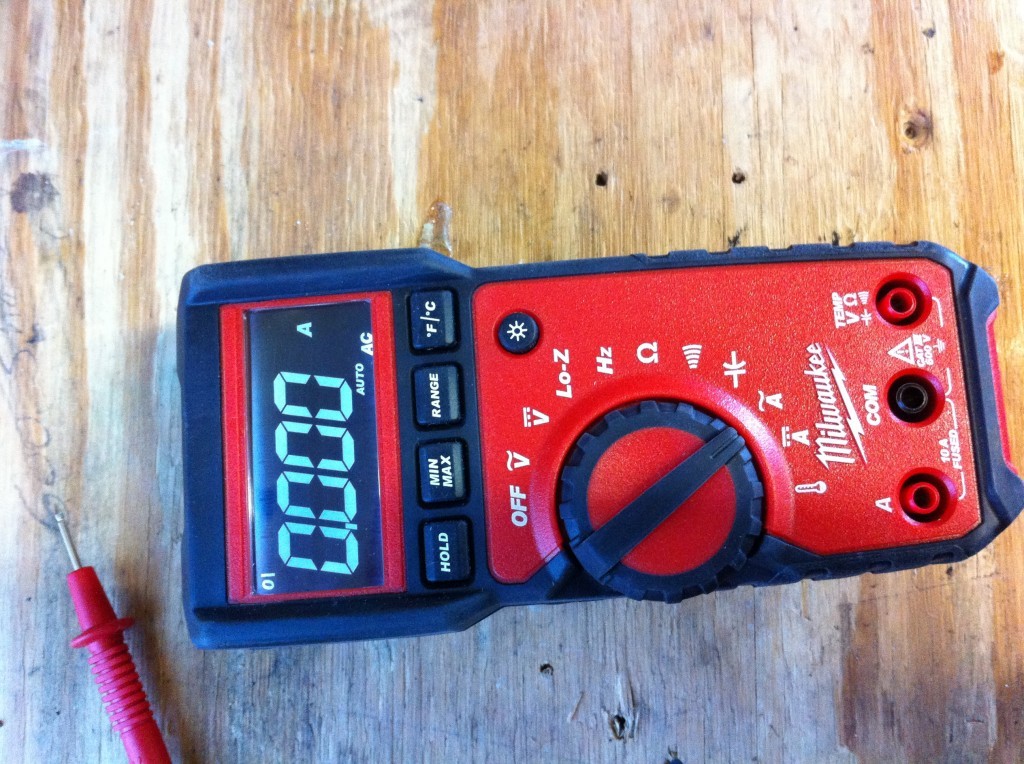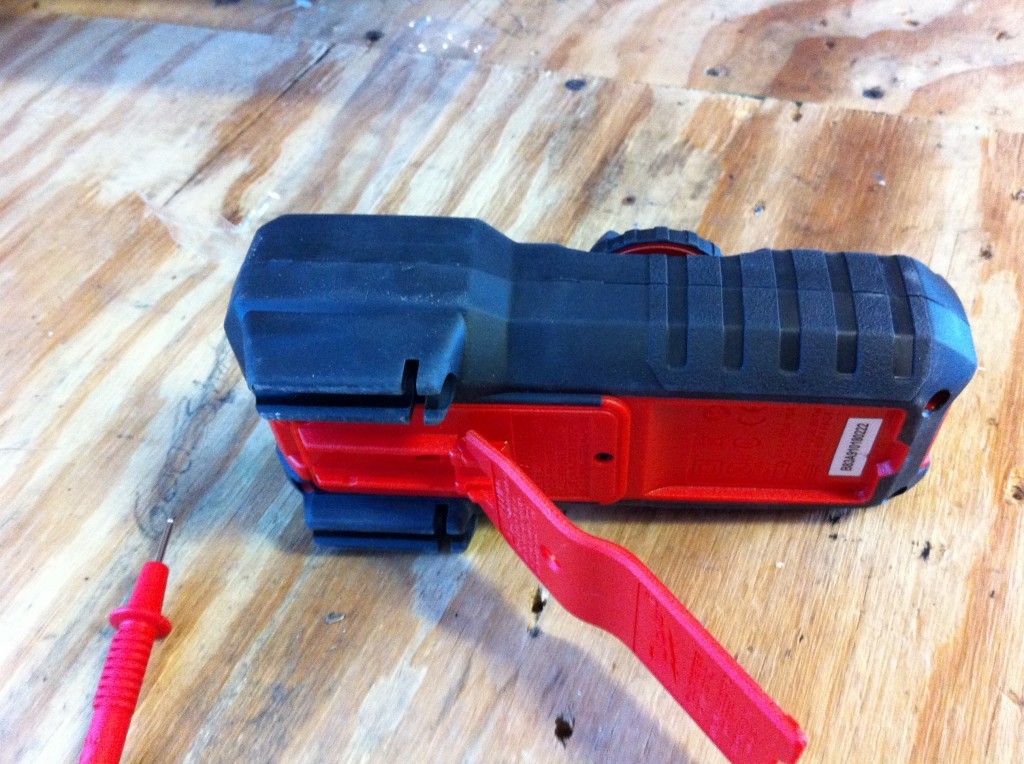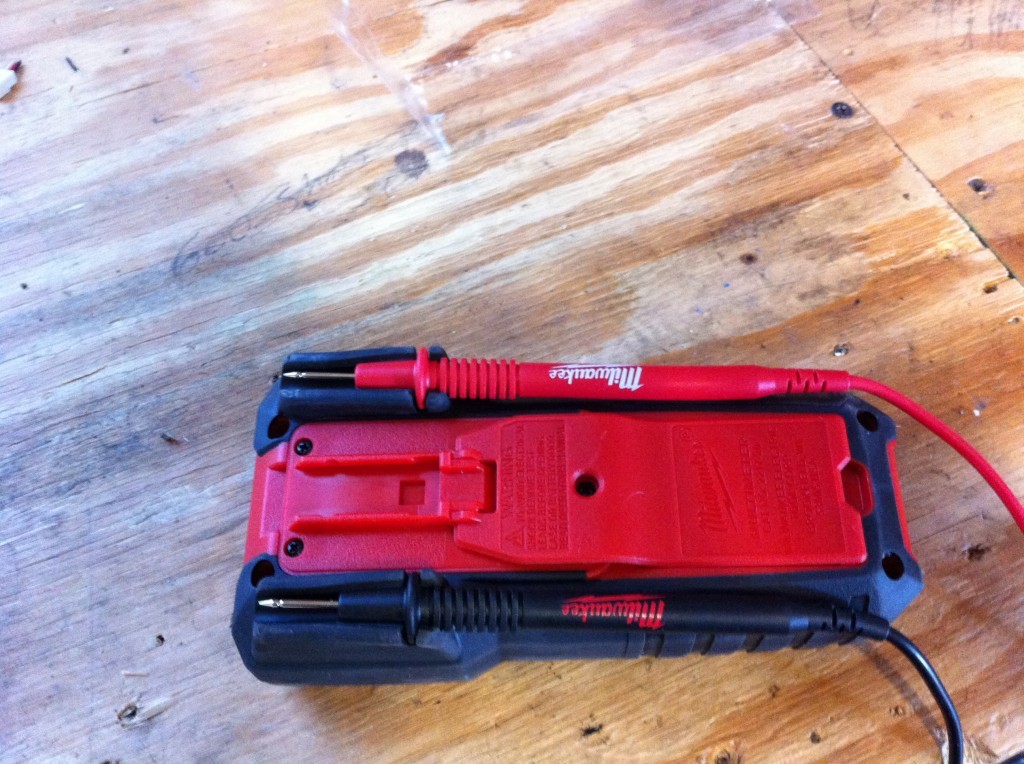If you’re like me your weekends are spent watching How Its Made on television and building things. Some of my favorite projects include using LED lights. No matter what I build, I always want to incorporate an LED either for a status indicator or for illumination. One tool that I would never be able to do without is a Multimeter, it allows me to test resistors, current, voltage and many other features. In the early days the multimeter looked very intimidating. It had one large dial and an analog gauge with more settings than an airplane cockpit. Today’s multimeters include a host of features that simplify the measurement process and the Milwaukee 2217-20 does not disappoint in the feature department. You can still get the old school ones if you are in denial that it is 2011.
Let’s take a look at the unit. It is solid, has an over-molded grip on the outside to protect it and is 6.5″ long. One thing that really jumped out at me when I turned it on was the display. The white numbers on the black background is the best contrast I have seen on any multimeter I have used in the past. The buttons are big and the dial can easily be used with gloves on and even touts a one handed feature, the notches in the side of the dial allow for easy one handed selections. On the back is a snap out stand and the back panel is removable to change the 2 included AA batteries. It also includes an on-board accessory mount for the sold separately voltage detector and magnet. Milwaukee recommends you send the unit in every year for calibration, unless you’re a hardcore user and need exact millivolts, you should be ok without calibration.
The inputs at the bottom are your typical 3 input with the common (ground) in the center. The included 5 year warranty on this tool is also a great feature. It comes with 2 leads, a banana plug for the temperature feature and an owners manual. The unit can measure up to 600 AC /DC volts and is highly accurate thanks to True-RMS. It can take temperatures from -40 to 762 degrees Fahrenheit. The CAT III 600V 2217-20 can handle up to 10A AC/DC. The four square buttons at the top are, a hold feature, Min/Max, Manual range and F/C select. The auto range feature means your do not have to preselect your measurement range, it does it for you. I will give you a quick basic crash course of the dial settings:
AC Voltage: Alternating Current, usually used in residential/industrial power settings running on grid power, use in outlets, appliances etc. up to 600 Volts.
DC Voltage: Direct Current, this is setting is often used in cars 12V systems, batteries etc. Up to 600 volts.
Lo-Z: Low Input Impedance, This will help eliminate ghost voltage. If you’re making a Flux capacitor for your Delorean, use this!
HZ: Frequency, Hertz. Automatic Voltage detection AC or DC. 9.999Hz-50.00kHZ (Amps or Volts)
Resistance: You can measure resistance and resistors with this one.
Continuity: This setting allows you to trace a wire or a circuit, If you are testing trailer lights and you want to see if there is a broken connection this is the setting to use. 30Ohms
Capacitance: The ability of a capacitor to store energy. 0.1-1000uF
The following 2 settings you will need to switch the red test lead to the left fused port. To measure current you will need to break the circuit and reconnect it to run through the multimeter.
AC Current: Grid Power applications.
DC Voltage: Usually battery power applications.
Temperature: With the included banana plug you can take temperatures from -40 to 762 degrees.
To wrap up, the Milwaukee 2211-20 is a fine multimeter. It is easy to read, rugged and priced right. It was $129 last time I checked Home Depot. It is feature rich and includes a 5 year warranty. Check out Milwaukee Tool for more info.

